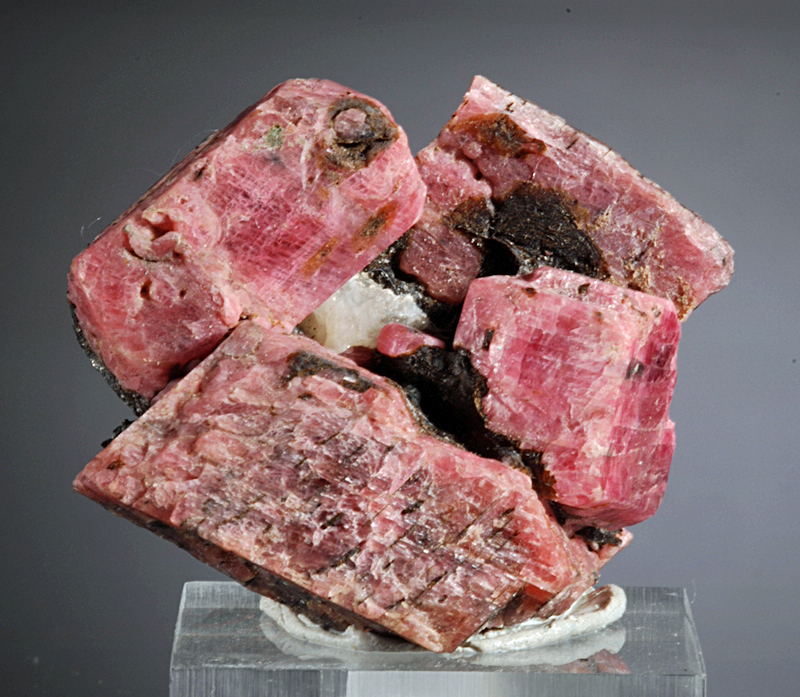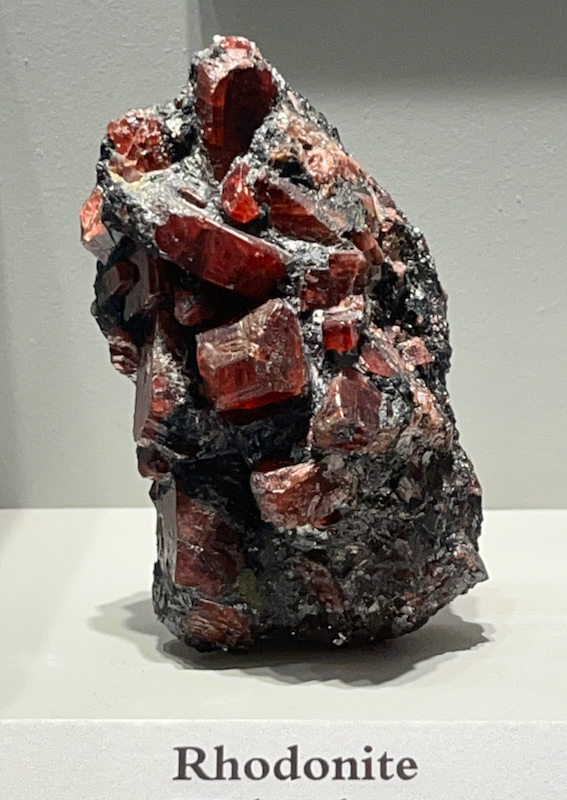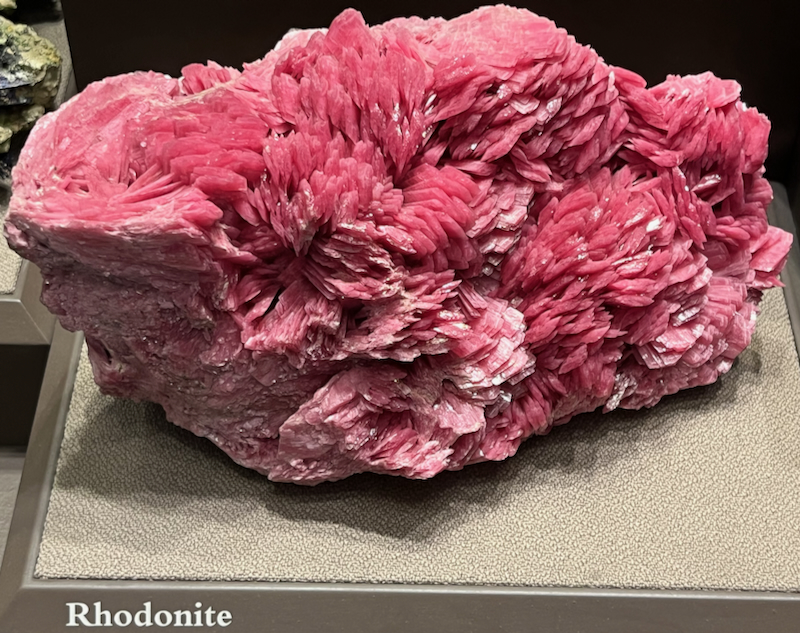Rhodonite
Rhodonite’s name has almost the same meaning as rhodochrosite (rhodo means “rose” in Greek); when it occurs in crystals, its reddish color is nearly the same; and it contains one of the same main elements, manganese (Mn). It was also named at about the same time–1819. But rhodonite can be very different. Rhodonite is a silicate mineral (the Si part in its formula, MnSiO3), so it’s harder than rhodochrosite and doesn’t dissolve in acid. It’s not as common for rhodonite to form in crystals, but when it does, at least the color, if not the shape, can be the same as rhodochrosite. Usually, though, rhodonite forms in large masses in rock and looks more pink. Those masses may not be pretty crystals, but if it has good color, “massive” rhodonite can be used as lapidary material for cutting and polishing for jewelry. If you’re out looking for rhodonite, maybe in Massachusetts, where it’s the state gemstone, you don’t look for reddish rocks, you look for black rocks. Why? Because the outside of massive rhodonite is usually oxidized manganese, and when manganese oxidizes, it turns black. You can polish the black part off to see the pink underneath. Some rhodonite has black or gray veins inside of it from the manganese, but that can actually be a good thing and create interesting patterns in the pink areas when it’s polished.
| Formula | Group or Type | Shape | Hardness | Specific Gravity | Streak | Luster |
|---|---|---|---|---|---|---|
| CaMn3Mn(Si5O15) | — | Triclinic | 5.5–6 | 3.4–3.7 | White | Vitreous to dull |



